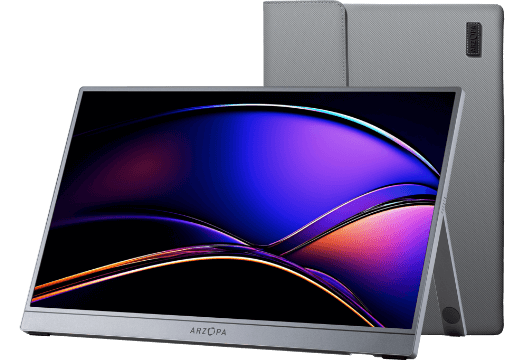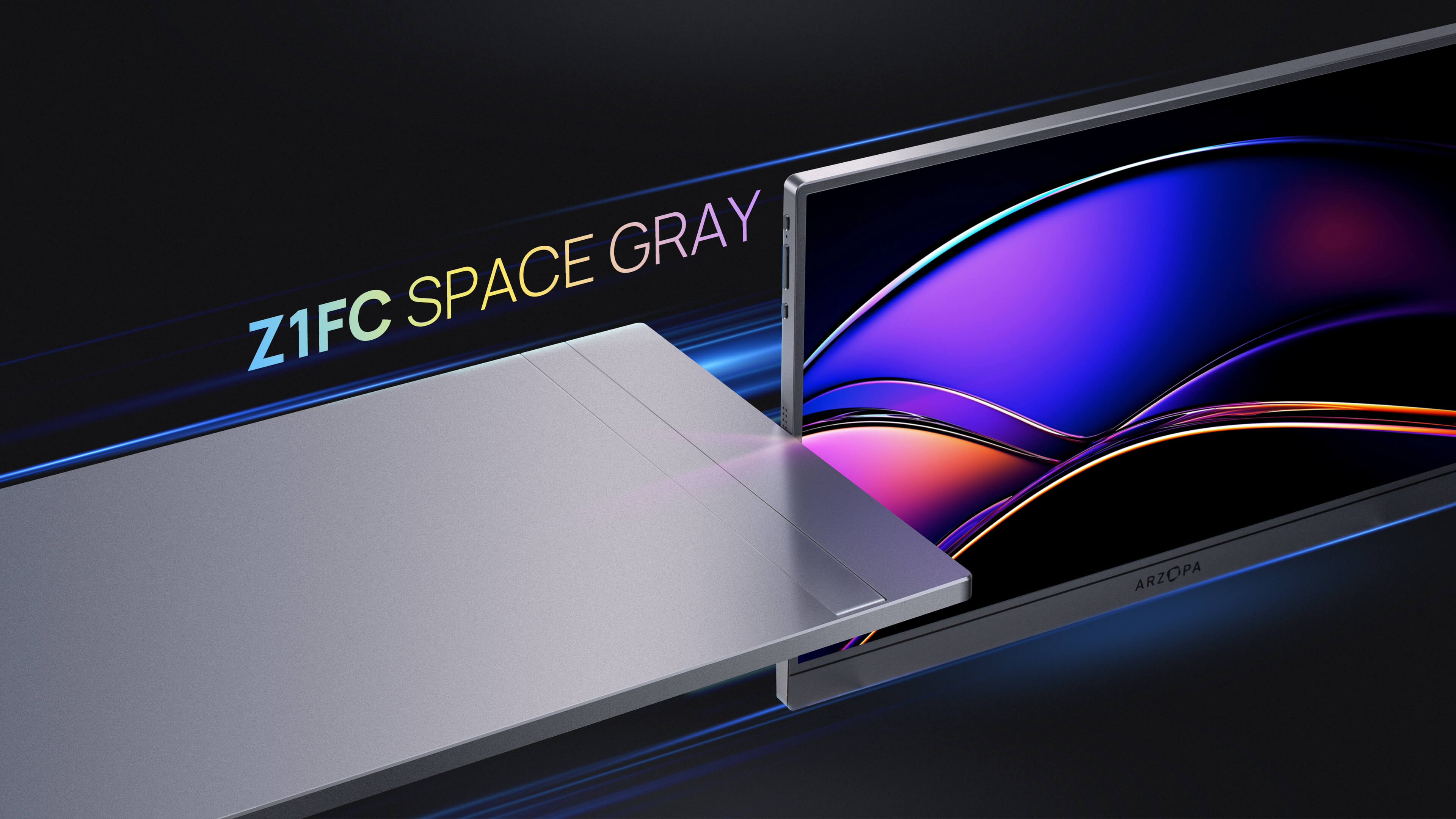Monitor technology has come a long way, and Fast IPS (In-Plane Switching) is a game-changer that combines the best of both worlds – the superior color reproduction and wide viewing angles of IPS panels with high refresh rates and lightning-fast response times.
What is Fast IPS?
What's the difference between ips and fast ips? Let's start from the definition. Fast IPS (In-Plane Switching) is a technology that combines the advantages of traditional IPS panels with high refresh rates and fast response times, making it ideal for gaming and multimedia applications.
IPS (In-Plane Switching) is a type of LCD panel technology that offers superior color reproduction, wider viewing angles, and better contrast compared to traditional TN (Twisted Nematic) panels. Fast IPS technology aims to address the limitations of traditional IPS panels by incorporating advanced liquid crystal materials and improved panel designs.
The key advantages of Fast IPS panels include:
-
High Refresh Rates: Fast IPS panels can achieve refresh rates of up to 240Hz or higher, significantly reducing motion blur and providing a smoother and more responsive gaming experience.
-
Low Response Times: Fast IPS panels have improved response times, typically around 1ms or lower, which minimizes ghosting and ensures crisp and clear motion rendering.

-
Wide Color Gamut: Like traditional IPS panels, Fast IPS panels offer excellent color reproduction and wide color gamuts, often covering 100% of the sRGB or even wider DCI-P3 color spaces.
-
Wide Viewing Angles: Fast IPS panels maintain consistent image quality and color accuracy from various viewing angles, making them suitable for collaborative work or shared viewing experiences.
The Advantages of Fast IPS Gaming Monitors
Image Quality
Fast IPS panels offer superior color accuracy and consistency compared to TN and VA panels, with typical color gamuts covering 99% of the sRGB space and Delta E values below 2, ensuring precise color representation. They provide a wider color gamut, enabling them to display more vibrant and accurate colors, resulting in a more immersive and visually stunning gaming experience.

Speed and Performance
One of the key advantages of Fast IPS panels is their fast response times, with some models achieving as low as 1ms (gray-to-gray) response times. This can keep up with fast-moving images without noticeable lag or ghosting, resulting in a smoother and more responsive gaming experience, giving players a competitive edge in fast-paced games. Additionally, Fast IPS panels have low input lag, with some models achieving as low as 4ms, ensuring minimal delay between user input and on-screen action.
Viewing Angles
Fast IPS panels offer excellent viewing angles, with typical viewing angles of 178 degrees both horizontally and vertically. This ensures that colors remain consistent and images stay clear even when viewed from different angles, with minimal color shifting or contrast loss.

Durability and Reliability
While not explicitly mentioned in the article, IPS panels are generally known for their durability and longevity compared to other monitor types like TN panels. The liquid crystal structure in IPS panels is less susceptible to image retention or burn-in issues, ensuring a longer lifespan and reliable performance over time.
Fast IPS vs. Other Monitor Technologies
Fast IPS (In-Plane Switching) panels offer several advantages over traditional TN (Twisted Nematic) and VA (Vertical Alignment) panels, making them the preferred choice for professionals and gamers:
Advantages of Fast IPS over TN Panels
- Wider viewing angles (178° horizontal/vertical) with minimal color shifting
- Better color accuracy and reproduction (100% sRGB, 98% DCI-P3)
- Higher contrast ratios (typically 1000:1)
- Faster response times (1ms GtG) to reduce ghosting and motion blur
Advantages of Fast IPS over VA Panels
- Faster pixel response times (1ms GtG vs 4-8ms for VA)
- Less dark level smearing and overshoot issues
- Wider viewing angles with better color consistency
While TN panels offer the fastest response times (<1ms), they suffer from poor viewing angles and washed out colors. VA panels provide higher contrast ratios (3000:1+) but can exhibit smearing with darker content due to slower pixel transitions.
Fast IPS strikes an excellent balance, combining wide viewing angles, accurate colors, high contrast, and incredibly fast response times (1ms GtG) that rival or surpass many TN and VA monitors. This makes them ideal for color-critical work, gaming, and media consumption where image quality and motion performance are paramount.
Manufacturers like LG, Asus, Acer, and others have optimized their Fast IPS panels to deliver a superior experience for professionals and gamers alike, with features like HDR support, high refresh rates (up to 270Hz), and wide color gamuts.
Choosing the Right Fast IPS Monitor
When choosing a fast IPS monitor, there are several key features to consider:
Refresh Rate
For gaming or fast-paced content, a high refresh rate is crucial. Look for monitors with at least 120Hz, with 144Hz or higher being ideal for smooth motion handling. Higher refresh rates reduce blur and make gameplay more responsive.

Response Time
Response time measures how quickly pixels can change colors, with faster times reducing ghosting and motion blur. For gaming, aim for a response time of 5ms or less, with 1ms being the fastest available.
Resolution
Higher resolutions like 1440p (2560x1440) or 4K (3840x2160) provide sharper images and more workspace, but require more GPU power. For gaming, 1440p hits a sweet spot between performance and detail.
Size
Larger monitors are more immersive but require more desk space. 27-inch is a popular gaming size, while 32-inch offers an expansive view for professional work.
Recommendations for the Best Fast IPS Monitors
Fast IPS monitors offer high refresh rates and fast response times, making them ideal for gaming and other applications that require quick screen updates. Here are some detailed recommendations:
- The OMNI VX28 Series from Lepton AI features a 180Hz refresh rate and 0.5ms MPRT response time, making it great for immersive gaming. It also supports AMD FreeSync™ Premium and is equipped with HDR10 for greater contrast and color saturation.
- The LG UltraGear 27GL83A-B is a fast and affordable gaming monitor that offers an IPS high performance panel at a low price. While not as feature-rich as some other monitors, it provides excellent value for its cost.

- The Acer Predator XB271HU offers a refresh rate of 144Hz that can be overclocked to 165Hz, making it a great choice for competitive gaming. It also features NVIDIA G-SYNC technology to reduce screen tearing and a 1440p IPS panel for excellent visuals.

- The Acer Nitro XV275K P3biipruzx is a versatile monitor that is great for many different usages, making it a jack-of-all-trades monitor. It offers a native resolution of 3840 x 2160 and is an excellent overall monitor.

- The Dell Alienware AW2523HF is the best 25-inch monitor we've tested, offering a fast 360Hz refresh rate and FreeSync VRR support with G-SYNC compatibility. It's a great choice for competitive gaming and has minimal motion blur with fast-moving objects.

- The Dell Alienware AW2725DF is the best 1440p monitor we've tested, offering a high 360Hz refresh rate and excellent motion handling. It's a great choice for gaming and has minimal motion blur with fast-moving objects.

It's worth noting that modern IPS monitors have significantly improved response times, making them suitable for fast-paced gaming. While IPS monitors may come with a higher price tag, the enhanced visual experience they provide makes them a worthwhile investment for both gamers and professionals . AGON by AOC has positioned the G4X series as a cost-effective option for those looking for a fast IPS monitor .
Setting Up Your Fast IPS Monitor for Optimal Performance
To set up your fast IPS monitor for optimal performance, follow these tips:
Calibration for Accurate Colors
- Use the monitor's built-in color calibration tools or a hardware calibrator to get accurate colors out of the box.
- Adjust RGB levels, gamma, and color temperature to your preferences for photo/video editing.
- Enable wide color gamut modes like DCI-P3 or Adobe RGB for professional color work.
Gaming Settings
- Set the refresh rate to the monitor's maximum (e.g. 240Hz, 360Hz) for the smoothest motion.
- Enable G-Sync or FreeSync for tear-free gaming if your GPU supports it.
- Use preset gaming modes to enhance visibility (e.g. boosting dark areas with Shadow Boost).
Ergonomic Setup
- Adjust the height, tilt, and swivel of the monitor stand for a comfortable viewing position that avoids neck/back strain.
- Position the monitor at roughly arm's length with the top 1/3 at eye level.
- Use bias lighting or dim ambient room lighting to reduce eye strain from the bright display.
By properly calibrating colors, tweaking gaming settings, and optimizing ergonomics, you'll get the best visual experience and comfort from your high-performance IPS gaming monitor.
Conclusion
Fast IPS technology has revolutionized the world of monitors, offering a perfect blend of stunning image quality, accurate colors, and lightning-fast performance. Whether you're a professional designer, content creator, or an avid gamer, Fast IPS monitors provide an unparalleled viewing experience that elevates your work and gameplay to new heights.
Don't hesitate to share your thoughts and experiences with Fast IPS monitors in the comments below. And if you found this guide about rapid IPS helpful, be sure to share it with your friends and fellow enthusiasts who might appreciate the insights into this cutting-edge display technology.
FAQ
Here are some frequently asked questions about fast IPS monitors:
1. What is a fast IPS monitor?
A fast IPS monitor is a type of LCD display that uses an in-plane switching (IPS) panel with a fast response time, typically 1ms or less. This allows for reduced motion blur and ghosting compared to standard IPS monitors, making them well-suited for gaming and fast-paced content.
2. What are the advantages of a fast IPS monitor?
- Faster response times than standard IPS, reducing motion blur and ghosting
- Accurate colors and wide viewing angles typical of IPS panels
- High refresh rates up to 240Hz for smooth motion
- Low input lag for responsive gaming performance
3. What is the difference between IPS and fast IPS?
The main difference is the response time. Standard IPS monitors have response times around 4-8ms, while fast IPS models achieve 1ms or less. This faster pixel response allows fast IPS to handle fast motion with less blur.
4. What refresh rates do fast IPS monitors support?
Fast IPS monitors are available with refresh rates up to 240Hz for very smooth motion. Common options include 144Hz, 165Hz, 180Hz and 240Hz.
Do fast IPS monitors have good color accuracy?
Yes, IPS panels in general are known for their excellent color accuracy and wide viewing angles. Fast IPS models maintain these strengths while adding the benefit of faster response times.
5. What is the typical price range for fast IPS monitors?
Fast IPS monitors are premium displays, so they tend to be more expensive than standard IPS or VA monitors. Expect to pay $300-800 USD depending on screen size, resolution, refresh rate and other features.
Alao see: Arzopa Z1FC 144Hz Portable Gaming Monitor
Gaming anywhere with Arzopa Z1FC 144Hz Portable Gaming Monitor for PS5, Xbox, and more.Features a full HD and 100% sRGB IPS screen for stunning visuals.
Arzopa Z1FC 144Hz Portable Gaming Monitor 16.1" Screen

- 16.1 Inch Full HD (1920x1080p) IPS with a premium aluminum design.
- 1.7 lb weight and 0.3-inch thickness make it ideal for on-the-go use.
- Supports PS5, Xbox, Switch, Steam Deck, PCs, phone, and more.
- Includes a built-in stand for both portrait and landscape viewing.












